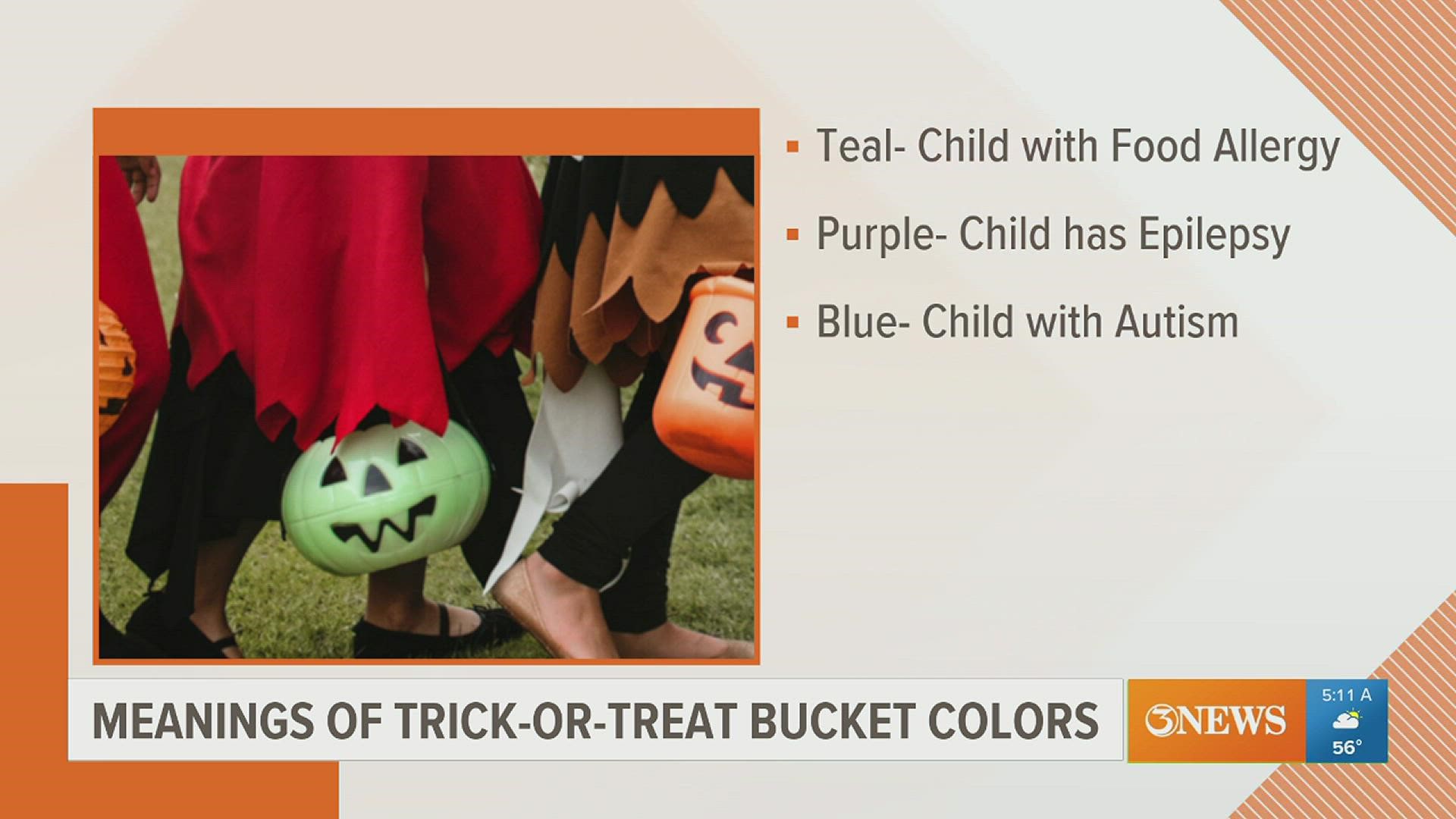CORPUS CHRISTI, Texas — A report from University of Texas Health at Houston shows the different types of colors you will see during Halloween that will allow the inclusion of all children. If you are passing out candy and treats this year, there are a few different colors you need to be aware of when trick-or-treaters arrive at your door.
Children will have various colored buckets, but they do have different meanings to them:
- Teal means the child has a food allergy. So you may want to have other items available to hand out, such as stickers, pencils, glow sticks, or toys.
- Purple signifies the child may have epilepsy.
- Blue means the child is on the Autism Spectrum.
Health experts encourage residents passing out candy to use kindness and acceptance in situations where the child may not be able to say "Trick-or-Treat." Experts also say children with Autism may also appear to be what others consider as "too old" to participate in Trick-or-Treating.
Residents are also urged to be aware of pre-printed cards a child may have who is non-verbal. So if a card is offered to you from a child, taking it with an open mind is strongly encouraged.
While there are trick-or-treaters who walk around with different colors, there are also homes that will have different colors decorated outside. These are usually pumpkins that are different colors, this is what they mean:
- Teal means the home owner may be passing out non-food treats.
- Purple pumpkins mean a person in the home may experience epileptic seizures. The home may also have residents who know how to provide care for those with Epilepsy.
- Pink signifies Breast Cancer Awareness. This means someone in the home has Breast Cancer and is undergoing treatment, or they are a survivor of the disease.
Anson Koshy, MD, a Developmental-Behavioral Pediatric Specialist says in part, "We can recognize, and more importantly try to empathize at least in a small way, with what it may be like for families of children with special health care needs or disabilities – the way they must problem-solve and adapt to situations that are difficult to control."
More from 3News on KIIITV.com:
- Former President Trump to speak in Nueces County this weekend
- 'Everyone can be forgiven': Family of killed motorcyclist speaks out after wrong-way SPID driver makes bond
- Thank you, Corpus Christi! 3NEWS dominates "Best of the Best" awards
- Motorcyclist killed by wrong-way driver in Flour Bluff mourned by his band
- Caregiver accused of stealing from elderly, ill Rockport residents arrested
- ELECTION: Wrong names on mail-in ballot envelopes for Nueces County couple
Subscribe to our YouTube channel for your daily news and exclusive extended interviews.
Do you have a news tip? Tell 3!
Put your name and contact information below, or email tell3@kiiitv.com, so we can get in touch with you about your story should we have questions or need more information. We realize some stories are sensitive in nature. Let us know if you'd like to remain anonymous.

